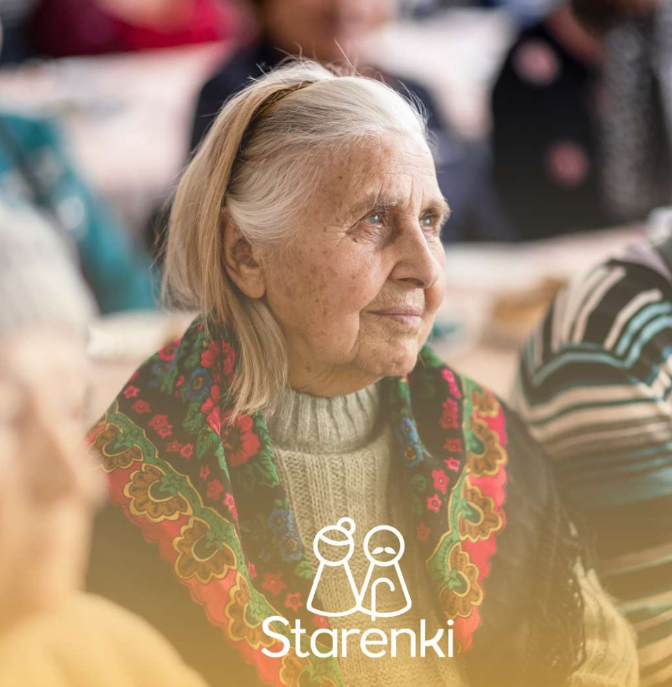Italy is the oldest country in Europe, and the second oldest country in the world after Japan. For several years, the country has been experiencing an extremely rapid aging of its population. According to the World Health Organization, in 2021, about 23% of the Italian population was over 65 years old. By 2050, this proportion is expected to reach 35%, more than a third of its population.
Some figures
In 2020, for every 1 child under the age of 6, there were 5.1 people over the age of 65. Ten years earlier, in 2011, the ratio was 1 to 3.8. In 1971, the ratio was almost balanced at 1.1. Just look at the curves below to realize the magnitude of the phenomenon. On the left is the curve showing the percentage of the population aged 65 and over from 1960 to 2021; on the right is the curve showing the percentage of the population aged 0 to 14 over the same period.


If the trend continues, the average age of the population will be 50.7 years in 2050, compared with 45.7 years in 2020. At the same time, the under-14s, currently 13%, will represent only 11.7% of the population in 2050.
Another worrying figure is that in 2048 the number of deaths could be double that of births, 784,000 against 391,000. This trend is clearly visible on the graph below. Since 2010, the mortality rate curve (in blue) is increasing while the birth rate curve (in red) is decreasing. This phenomenon generates a negative natural surplus rate, which reached its lowest level in 2020.

Since 2015, Italy has been losing between 100,000 and 175,000 inhabitants every year. According to ISTAT (the Italian Institute of Statistics) Italy could lose more than 20% of its population in 50 years, or 12 million inhabitants. The Italian population would drop from 59.6 million in 2020 to 47.6 million in 2070. ISTAT specifies that this is an average estimate and not the worst-case scenario.
Despite the obvious urgency of the demographic crisis, it was the great absentee of the debates during the legislative elections last September. This accelerated ageing of the population has serious economic and social consequences that are unfortunately ignored by the political parties.
What is the situation of the elderly in Italy?
The situation of the elderly in Italy is complex and unequal. Indeed, it depends on several factors such as health, economic and social situation, and the presence or not of a family support network.
Regarding health care for the elderly, Italy has a universal health care system that covers all citizens and foreign residents. However, the Italian health care system has been facing difficulties in recent years due to the economic crisis and the COVID-19 pandemic.
There are about 5,000 nursing homes in Italy, called “casa di riposo”. The quality of care and facilities can vary considerably. This is because the health care system in Italy is primarily focused on hospital and home care, rather than institutional care.
In Italy, as in most southern countries, a form of familialism persists. Italy has a strong family tradition and a culture where family members take care of each other, including the elderly. However, economic, and social conditions and customs have changed over time. Many Italian families are no longer able to provide full-time care for their elderly. In fact, these different factors contribute to the popularity of home helpers and have given way to a real social phenomenon: the badanti.
Who are the badanti in Italy?
Badanti is the Italian term for home helpers for the elderly.
In Europe, the number of domestic workers assisting the elderly is constantly increasing. Four times out of five they are women. In Italy, this phenomenon has been growing for several years in response to the prices and the difficulties encountered by the specialized care structures. The badanti come mainly from another country, mostly from Eastern Europe and South America.
What are the causes of this phenomenon?
There are several reasons for the use of immigrant labor as home care workers. First, badanti who live in their employer’s home allow for a continuous presence. In this case, they also allow the elderly person to age at home through home care. Second, hiring an immigrant badante can be a financial advantage over the high cost of nursing homes. Finally, badanti are often the result of the lack of other suitable solutions and are the best possible alternative. Badanti provide a real social balance, offering families the support they need to continue working.
The badanti: a vulnerable population
Badanti in Italy often suffer from a complicated life context. According to the International Labor Organization, domestic workers “represent a significant part of the global workforce in the informal sector and are among the most vulnerable categories of workers. Very often these domestic workers are in an irregular situation and are totally dependent on the people they accompany. It is estimated that 60% of badanti live with the elderly. These situations favour the precariousness of the badanti who can find themselves without salary or housing from one day to the next in case of death or hospitalization of their employer. Moreover, these situations can lead to an excessive volume of work. If there is a contract, a maximum of 54 hours of work per week is defined. When there is no contract, badanti usually work much longer, often associated with a 24-hour commitment.
As far as immigrant workers are concerned, badanti are exposed to integration problems: the language barrier, the lack of consideration and appreciation of their jobs, or physical and even financial exploitation. These numerous obstacles can cause psychological fatigue and, in the worst case, social isolation.
A real challenge for Italy
Home help is a strategic sector in Europe. Even if an effective intervention of the State is still pending, some measures have been taken by the Italian government. Civil society organizations and trade unions are also working to improve the working conditions and rights of immigrant workers in the care sector in Italy. Initiatives have been launched to promote the integration and equality of immigrant workers in this sector. But also, to strengthen labor and social protection regulations. For example, tax benefits are provided to families who employ home care workers. This project making this option more accessible for many households and providing a framework for the work of bandanti. This issue is central, as it is estimated that the country will need 500,000 additional domestic workers by 2030…
How to find the necessary resources to take care of the elderly? How to enable an effective intergenerational dialogue? How to ensure the safety of its domestic workers?
These are all questions that the Italian government will have to answer. Like Japan, Italy will have to be resourceful in providing effective solutions to the current demographic crisis. Italy, and European countries in general, will have to put solidarity back at the heart of political debates.
Sources :
Population âgée de plus de 65 ans, hommes (% du total) – Italy | Data (banquemondiale.org)
Population âgée de 0 à 14 ans, total – Italy | Data (banquemondiale.org)
La crise démographique, grande absente de la campagne électorale italienne | Les Echos







